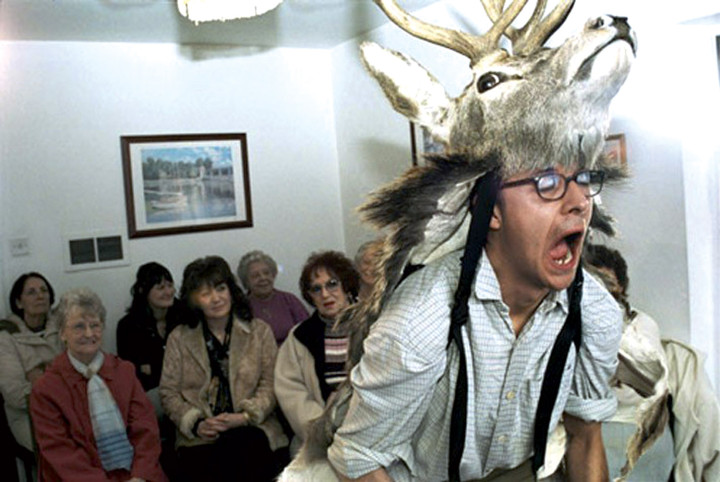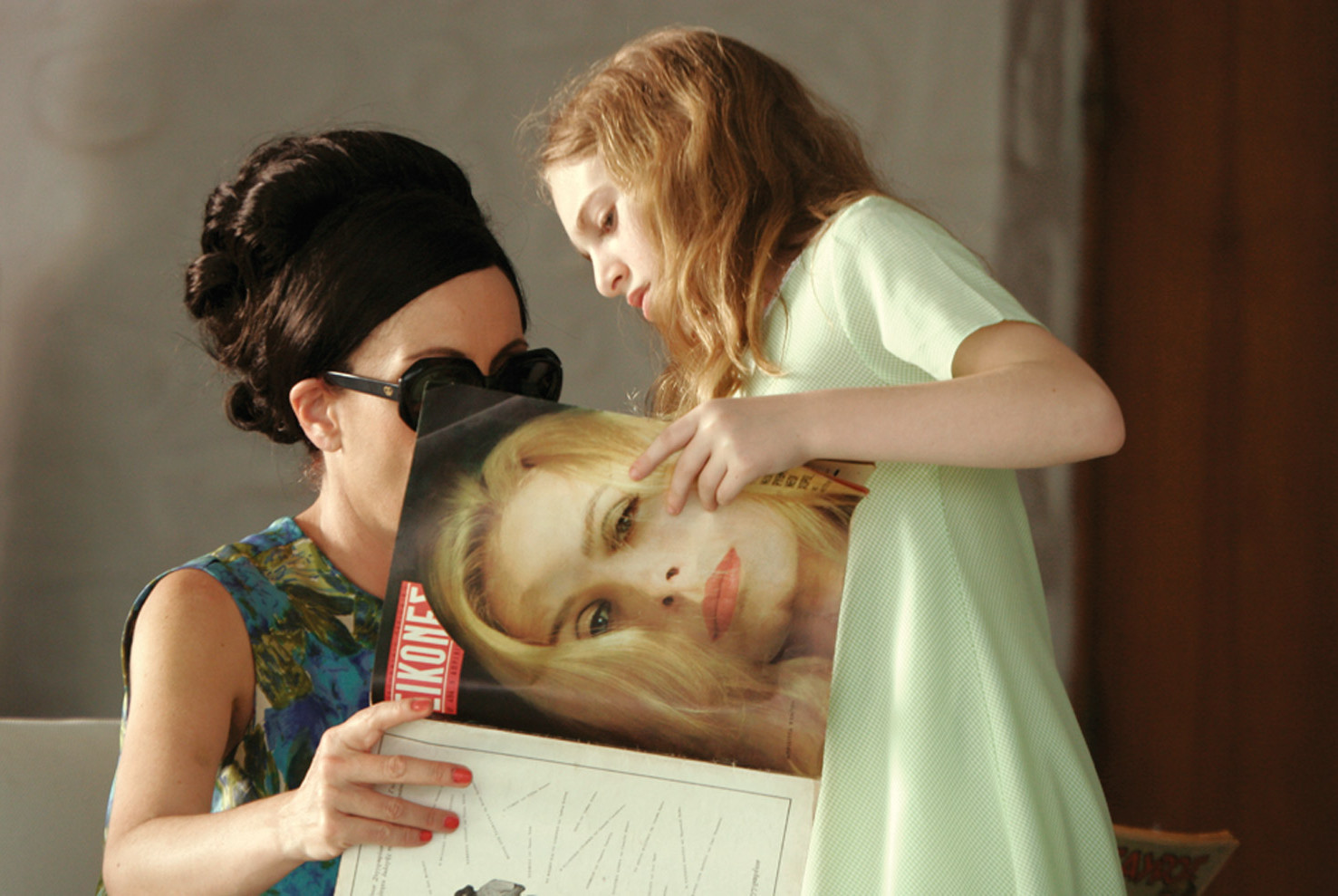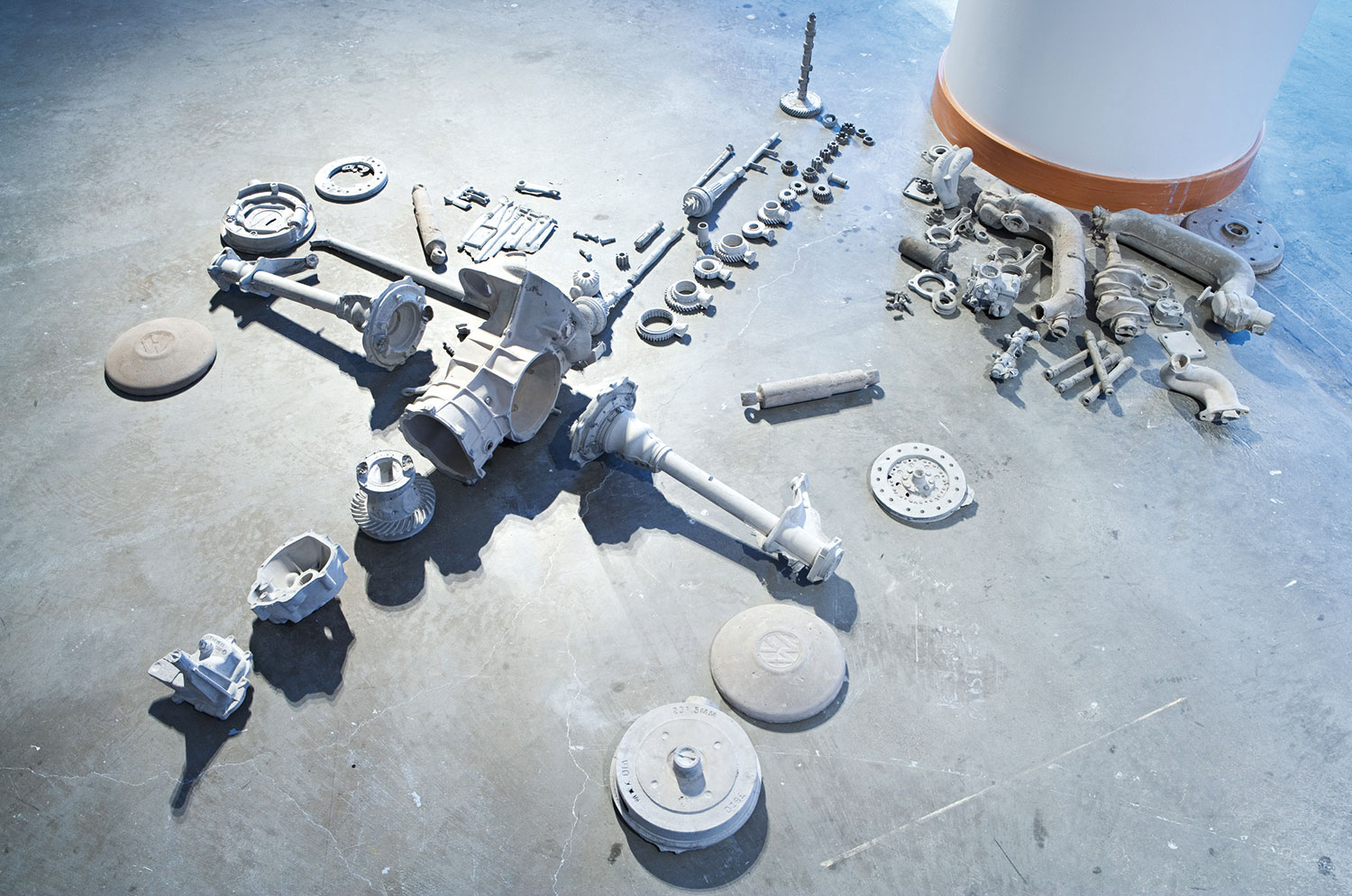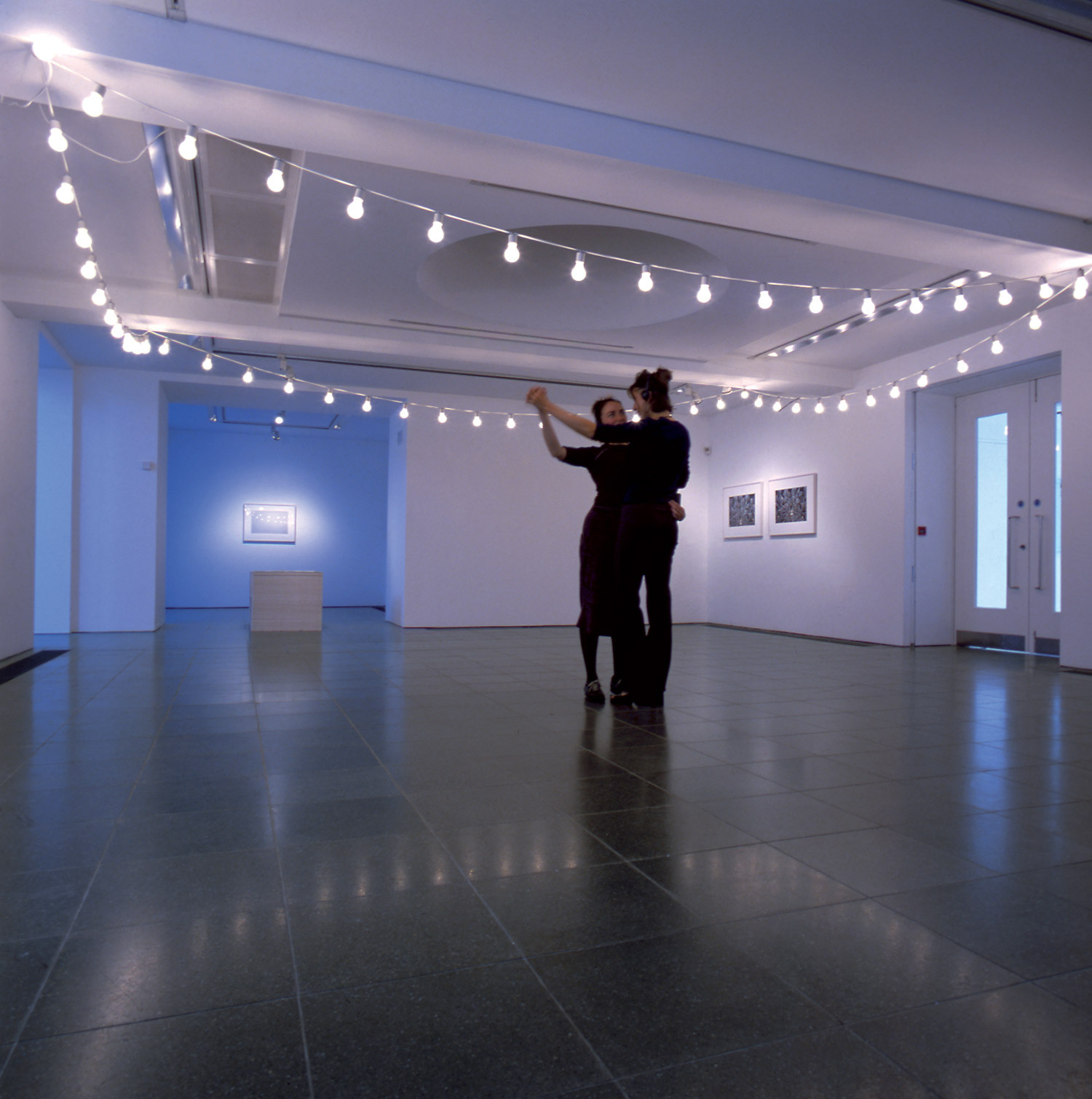
Photography by Nick David.
Opening with an immaculate installation of restrained works by Claire Barclay, Enrico David and Tonico Lemos Auad, “British Art Show 6” subtly crosses the streams of art and craft, drawing attention to reinventions of artisanal working practice characteristic of a great deal of recent art in the United Kingdom. The progressively cluttered floors of the BALTIC steadily unveil works by a number of artists known for their re-visitation of objecthood: Roger Hiorns, Eva Rothschild and Gary Webb among many others. The most engaging examples of this line of curatorial enquiry emerge in the narrative films and videos of Saskia Olde-Wolbers, Daria Martin and Mark Leckey, which flaunt a richly allusive poetics.
The first floor also announces a second loose theme, namely the globalisation of British art. This means that we get to see more work by artists who have moved to Great Britain to live and work, but also that topographically speaking, much of the representational work, mainly video based, exploits subject matter outside the British Isles. The latter begins auspiciously with two multi-screen video installations: Ergin Çavusoglu’s Tahtakale (2004), which invocates the atmosphere of a currency trading black market in Istanbul, and Phil Collins’ They shoot horses (2004), a seven hour dance marathon featuring a group of young Palestinians. While the hectic context may be liable, the number of films and videos that represent comparable subject matter are, in stark contrast, repetitive and derivative.
As curators Alex Farquharson and Andrea Schlieker declare, London is indubitably an archetypal global émigré city. In the UK it is largely unique. While it is responsive to the changing demographics of London, “British Art Show 6” fails to consider how migration and globalisation affect other parts of the country. For example, while Glasgow may be attracting artists, the city and Scotland as a whole are rapidly haemorrhaging their population. The legitimacy of ‘Britishness’ as a Londoncentric ideological construct has long been contested within the regions of the current four member nations of the UK. Marooned somewhere between a caricatured geopolitics and the auteur’s oeuvre, this exhibition neglects glocal politics and the regional communities of artists that help to sustain diverse practices.
A third curatorial tendency examines relational practices. While this was a major concern of art practice throughout the 1990s, the last two editions of “British Art Show” exhibited little evidence of its existence. This year’s edition dutifully redresses the balance. Unfortunately many of the works which correspond to this set of received ideas are largely interchangeable and largely fail to facilitate the discussions they claim to solicit. The arclight falls narrowly on infrastructures, strategies, networks, migration, archives, art as knowledge: the ubiquitous clichés of international biennials. Luckly “British Art Show 6” includes many more imaginative politicised artists who proffer idiosyncratic routes beyond this impasse, notably Marcus Coates, Adam Chodzko, Doug Fishbone and Chris Evans. Despite its inevitable omissions and shortcomings, the show has to be highly commended as the most inclusive and diverse in the survey exhibition’s 26-year history.





